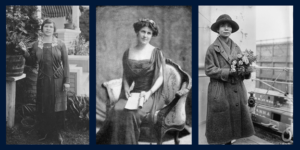 Once in a while, events in the country bring different interest groups into alignment to work together for structural change. It seems possible that the combination of the urgency of hardships families are experiencing wrought by the coronavirus pandemic, the election of Joe Biden and Kamala Harris, and the narrow Senate majority established by the election of two Georgia democrats will create that possibility. As I wrote in a previous post, citing Claire Cain Miller, “Nearly everybody cares for family at some point”:
Once in a while, events in the country bring different interest groups into alignment to work together for structural change. It seems possible that the combination of the urgency of hardships families are experiencing wrought by the coronavirus pandemic, the election of Joe Biden and Kamala Harris, and the narrow Senate majority established by the election of two Georgia democrats will create that possibility. As I wrote in a previous post, citing Claire Cain Miller, “Nearly everybody cares for family at some point”:
- In two-thirds of married couples with children, both parents work.
- Nearly half of adults in their forties and fifties are caring for both children and parents.
- The United States is the only developed Western country that does not support working parents with national policies for paid family leave or subsidized childcare.
New legislation proposed by the Biden-Harris team “approaches the care economy in a holistic way, across the age spectrum,” says Ai-jen Poo, executive director of the National Domestic Workers Alliance, in an article by Paula Span. Their plan combines Medicaid benefits for older and disabled adults, preschool funding for toddlers, and better pay and benefits for home-care and childcare workers into one package. Specifically, Span explains:
- The Biden-Harris plan builds on earlier campaigns for paid family leave and recent efforts to rebalance Medicaid, making it more focused on covering caregiving at home for older adults rather than in dreaded nursing homes.
- Their plan would convert “the anemic federal Family and Medical Leave Act, which mandates only unpaid leave, into 12 weeks of paid leave.”
- It proposes a tax credit for as much as $5,000 to reimburse families for expenses associated with unpaid caregiving, such as paid help, home modifications, remote safety monitoring devices, and hearing aids.
- It would also give family members social security credits for time out of the labor force to care for family members.
How will this caregiver package be paid for? Span notes that the Biden team asserts that the costs can be paid for over ten years “by rolling back tax breaks for real estate investors with incomes over $400,000 and increasing tax compliance for other high earners.” The Biden team also asserts that the plan will create three million new caregiving and education jobs and increase employment by five million by allowing unpaid caregivers to reenter the work force.
This kind of change is so needed but will not happen without strong support. Let’s let our congressmembers know that we support caregivers by writing and calling them to support this legislation when it comes up—and I believe that it will come up soon.
Photo by Josh Appel on Unsplash
 Title IX of the Education Amendment, signed into law in 1972, “forbade institutions receiving federal funds—virtually all public schools and universities—
Title IX of the Education Amendment, signed into law in 1972, “forbade institutions receiving federal funds—virtually all public schools and universities— The COVID-19 pandemic laid bare some facts about occupational segregation by gender in the United States. As I explained in a
The COVID-19 pandemic laid bare some facts about occupational segregation by gender in the United States. As I explained in a  I got the message early in life that it was better to be a boy than a girl. I heard my parents talk about my father’s disappointment that I, his firstborn child, was a girl when he wanted a boy. I tried to be his son. I played sports with the boys in the neighborhood, and my father was proud. I climbed trees and did rough-and-tumble boy activities, and my mother was horrified. She sent me to take ballet lessons so I would be more graceful like a girl should be. I got the message but rebelled against it. I joined the neighborhood boys in throwing rocks at the boring neighborhood girls. I was called a “tomboy.”
I got the message early in life that it was better to be a boy than a girl. I heard my parents talk about my father’s disappointment that I, his firstborn child, was a girl when he wanted a boy. I tried to be his son. I played sports with the boys in the neighborhood, and my father was proud. I climbed trees and did rough-and-tumble boy activities, and my mother was horrified. She sent me to take ballet lessons so I would be more graceful like a girl should be. I got the message but rebelled against it. I joined the neighborhood boys in throwing rocks at the boring neighborhood girls. I was called a “tomboy.” An important new study conducted for the Brookings Institute by Tuugi Chuluun and Kevin L. Young provides a novel view of women’s representation in organizations around the globe. The authors, by using a new network analysis technique, note that the lack of representation of women in leadership positions in the United States is well documented: thirty-seven Fortune 500 companies have women CEOs, and only three of these CEOs are women of color.
An important new study conducted for the Brookings Institute by Tuugi Chuluun and Kevin L. Young provides a novel view of women’s representation in organizations around the globe. The authors, by using a new network analysis technique, note that the lack of representation of women in leadership positions in the United States is well documented: thirty-seven Fortune 500 companies have women CEOs, and only three of these CEOs are women of color. It is always exciting when new barriers are broken by women. Kim Ng and Erika James recently became the first Asian American and woman of color, respectively, appointed in their roles, and Abby Phillip and Savannah Guthrie are being recognized as rising stars. What follows is some information about their accomplishments.
It is always exciting when new barriers are broken by women. Kim Ng and Erika James recently became the first Asian American and woman of color, respectively, appointed in their roles, and Abby Phillip and Savannah Guthrie are being recognized as rising stars. What follows is some information about their accomplishments. Christine Lagarde, who became the first female president of the European Central Bank (ECB) in 2019, is already demonstrating the difference that women leaders can make. In an interview conducted by Alison Smale and Jack Ewing of the New York Times,
Christine Lagarde, who became the first female president of the European Central Bank (ECB) in 2019, is already demonstrating the difference that women leaders can make. In an interview conducted by Alison Smale and Jack Ewing of the New York Times,  The Roosevelt Institute and John Jay College of Criminal Justice published a new study that reveals important information about the
The Roosevelt Institute and John Jay College of Criminal Justice published a new study that reveals important information about the  I have always been outraged by stories of sexual and emotional abuse of young women athletes. I remember how vulnerable I was as an adolescent to the power of authority figures such as teachers, bosses, and landlords. The stories of the more than five hundred victims of sexual abuse by the team doctor of the USA Gymnastics organization, Lawrence G. Nassar, revealed in 2017 when eighteen of his victims filed a federal lawsuit raise
I have always been outraged by stories of sexual and emotional abuse of young women athletes. I remember how vulnerable I was as an adolescent to the power of authority figures such as teachers, bosses, and landlords. The stories of the more than five hundred victims of sexual abuse by the team doctor of the USA Gymnastics organization, Lawrence G. Nassar, revealed in 2017 when eighteen of his victims filed a federal lawsuit raise  I am always pleased to stumble on an obituary for a woman who died long ago printed in the New York Times. The Times has been belatedly publishing these obituaries to make amends for overlooking the accomplishments of women in the past. Here are the stories of three more women who are new to me.
I am always pleased to stumble on an obituary for a woman who died long ago printed in the New York Times. The Times has been belatedly publishing these obituaries to make amends for overlooking the accomplishments of women in the past. Here are the stories of three more women who are new to me.